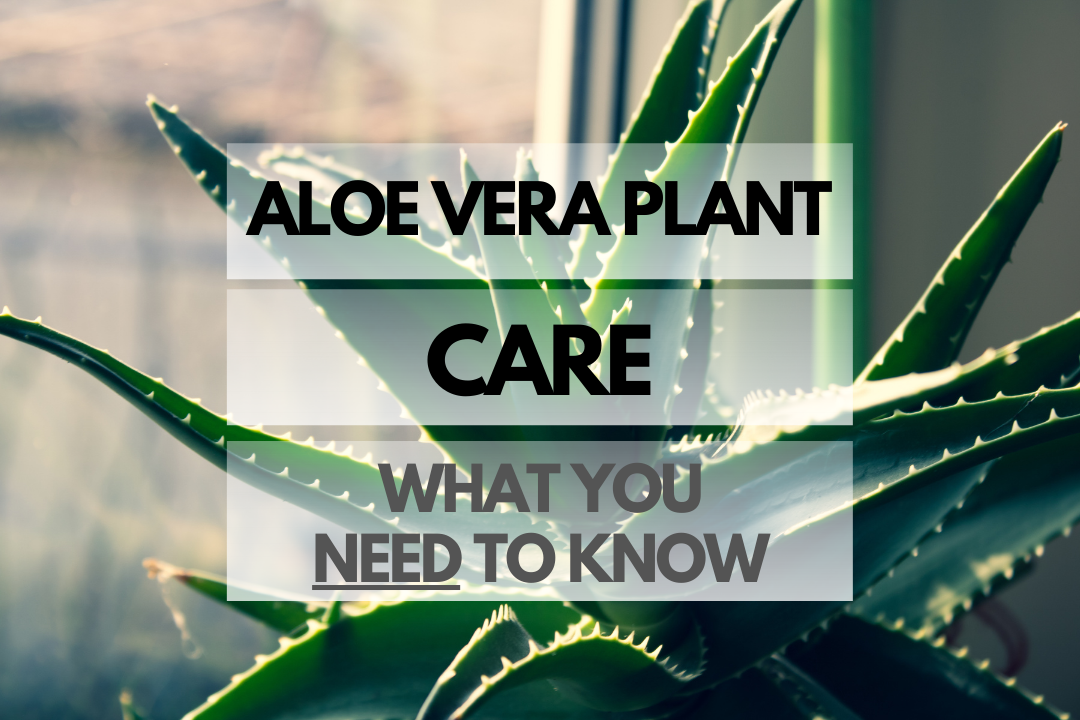Nothing quite beats the satisfaction of nurturing a plant and watching it thrive. So you’ve decided to adopt an Aloe Vera plant, huh? Great choice! This plant is not only beautiful but also has many practical uses. In this casual and fun guide, we’ll explore everything you need to know about Aloe Vera care.
Aloe Vera Plant Care Guide
Let’s dive into the specifics of caring for your new green friend!
Quick Reference Table: Caring for Aloe Vera Plant
| Aspect | Details |
|---|---|
| Sunlight | Partial sun or bright, indirect light |
| Soil | Well-draining, sandy or gritty mix |
| Watering | Deep but infrequent watering, allowing soil to dry out between |
| Pruning | Remove damaged or dead leaves as needed |
| Temperature | 55-80°F (13-27°C) |
Aloe Vera Plant Sunlight: Do They Need It and How Much?
Aloe Vera plants love sunlight, but they’re not too picky. They’ll be happy with partial sun or bright, indirect light. Place your plant in a spot that gets a good dose of sunshine throughout the day but isn’t constantly exposed to direct, scorching sunlight. Too much direct light can cause the leaves to turn brown or yellow, while too little light may lead to a weak, leggy plant.
Aloe Vera Plant Soil Tips
When it comes to soil, Aloe Vera plants prefer well-draining, sandy or gritty mixes. A good-quality cactus or succulent mix works well. This helps prevent the roots from sitting in water, which can lead to root rot. If you want to create your own mix, combine equal parts potting soil, coarse sand, and perlite or pumice for a well-draining blend.
Aloe Vera Plant Watering and Frequency
These desert dwellers are drought-tolerant and prefer deep but infrequent watering. Allow the soil to dry out between waterings, and then soak it thoroughly. In the summer months, you might water your Aloe Vera plant every 2-3 weeks, while in the winter, you can reduce it to once a month or even less.
Pruning Aloe Vera Plant Properly
Pruning Aloe Vera plants is fairly simple. Just remove any damaged or dead leaves as needed. Use a clean, sharp pair of scissors or pruning shears to make a clean cut close to the base of the leaf. Be cautious of the plant’s spines and the gel inside the leaves, as it can be slippery.
Optimal Aloe Vera Plant Temperature: Can They Tolerate the Cold?
Aloe Vera plants prefer temperatures between 55-80°F (13-27°C). They can’t handle freezing temperatures, so if you live in a colder climate, it’s best to grow your Aloe Vera plant indoors or bring it inside during the winter months.
Common Aloe Vera Plant Problems
Overwatering
Overwatering is one of the most common issues for Aloe Vera plants. Symptoms include yellowing leaves, root rot, and a soft, mushy base. To avoid overwatering, make sure you’re using well-draining soil and allowing it to dry out between waterings.
Pests
Aloe Vera plants can occasionally be affected by pests like mealybugs, aphids, or scale insects. Keep an eye out for any signs of infestation and treat promptly with insecticidal soap or neem oil.
Aloe Vera Plant Outdoors vs Indoors
Aloe Vera plants can grow both indoors and outdoors. Let’s look at the pros and cons of each:
| Location | Pros | Cons |
|---|---|---|
| Outdoors |
|
|
| Indoors |
|
|
Best Pots for Aloe Vera Plant
When choosing a pot for your Aloe Vera plant, it’s essential to consider drainage and size. Opt for a pot with drainage holes to prevent overwatering and root rot. A terra cotta pot is an excellent choice, as it allows excess moisture to evaporate. As for size, pick a pot that’s just slightly larger than the root ball of your Aloe Vera plant. This will give it enough room to grow without sitting in too much wet soil.
Aloe Vera Plant Facts
Let’s explore some fascinating facts about the Aloe Vera plant that you may not have known!
Aloe Vera Plant Benefits
Aloe Vera plants are more than just eye-catching houseplants. Here are some benefits they offer:
- Medicinal uses: Aloe Vera gel has been used for centuries to treat minor burns, wounds, and skin irritations.
- Air purification: Aloe Vera plants can help improve indoor air quality by removing pollutants like formaldehyde and benzene.
- Low maintenance: These hardy succulents are easy to care for, making them perfect for novice and experienced gardeners alike.
Growth Rates: How Fast Do They Grow?
Aloe Vera plants have a moderate growth rate, typically reaching maturity in 2-4 years. Factors like lighting, temperature, and proper care can influence growth speed. With the right conditions, your Aloe Vera plant can grow up to 1-2 feet tall and wide.
Aloe Vera Plant Lifespan
With proper care, Aloe Vera plants can live for many years, often reaching 5-25 years or more. By providing the right environment and meeting their basic needs, you can enjoy your Aloe Vera plant for a long time.
Are Aloe Vera Plants Safe?
While Aloe Vera gel is widely used for its medicinal properties, the plant’s sap can be toxic when ingested. It is important to keep Aloe Vera plants out of reach of pets and children, as they can cause gastrointestinal issues if ingested.
Aloe Vera Plant Flowers
When grown in optimal conditions, Aloe Vera plants can produce tall, slender flower stalks with tubular yellow, orange, or red flowers. Flowering is more common in outdoor plants, but it can occasionally happen indoors with proper care and lighting.
Aloe Vera Plant Types and Varieties
There are over 500 species of Aloe, but Aloe Vera is the most well-known and widely cultivated. Here are some popular Aloe Vera varieties:
Aloe Vera Barbadensis Miller
This is the most common Aloe Vera variety and is known for its thick, fleshy leaves filled with healing gel. It has a rosette growth pattern and can grow up to 2 feet tall.
Aloe Vera Chinensis
A smaller variety, Aloe Vera Chinensis has shorter leaves that grow in a dense rosette. It’s often grown as a decorative houseplant and can reach up to 1 foot tall.
Aloe Vera Arborescens
Also known as the “Tree Aloe,” this variety can grow up to 10 feet tall and has a distinctive branching growth habit. Its leaves are thinner and more elongated than other Aloe Vera varieties.
Aloe Vera Plant Pros and Cons
| Pros | Cons |
|---|---|
|
|
Aloe Vera Plant Cost
The cost of an Aloe Vera plant can vary depending on factors like size, age, and variety. Small Aloe Vera plants typically range from $5 to $20, while larger, more mature plants can cost $25 or more.
Where to Buy Aloe Vera Plants
You can find Aloe Vera plants at local nurseries, garden centers, and even some grocery stores. They’re also available through online retailers like Amazon, Etsy, and specialized succulent shops.
Is Aloe Vera Plant Propagation in Water Possible?
While it’s not the preferred method, it is possible to propagate Aloe Vera plants in water. Remove a healthy leaf from the mother plant, let it callous over for a few days, and then place the cut end in water. Change the water regularly, and once roots develop, transplant the cutting into soil.
Additional Resources
Here are some helpful resources for further information on Aloe Vera plants:
- Scientific article on Aloe Vera’s medicinal properties
- GardenWeb Aloe Forum
- Aloe Vera Enthusiasts Facebook Group
- International Aloe Science Council
- Books: “Aloe Vera: Nature’s Silent Healer” by Alasdair Barcroft and “Aloe Vera Handbook” by Max B. Skousen
FAQ for Aloe Vera Plant Care
Are Aloe Vera plants toxic to cats?
Yes, Aloe Vera plants can be toxic to cats if ingested. The sap can cause vomiting, diarrhea, and other gastrointestinal issues. Keep your plant out of reach of your feline friends.
Are Aloe Vera plants toxic to dogs?
Similar to cats, Aloe Vera plants can be toxic to dogs if ingested. Keep the plant away from your pets to prevent gastrointestinal problems.
Are Aloe Vera plants toxic to kids?
Aloe Vera plants can be toxic to children if ingested. The sap can cause gastrointestinal issues like nausea, vomiting, and diarrhea. Keep the plant out of reach of young children.
How tall do Aloe Vera plants get?
Aloe Vera plants can grow up to 1-2 feet tall and wide, depending on the variety and growing conditions.
Can Aloe Vera plants live outside?
Aloe Vera plants can live outside in warm, frost-free climates (USDA hardiness zones 9-11). In colder climates, it’s best to grow Aloe Vera plants in pots and bring them indoors during the winter months.
Are Aloe Vera plants poisonous?
While Aloe Vera gel is widely used for medicinal purposes, the plant’s sap can be toxic when ingested. Keep the plant out of reach of children and pets to prevent accidental ingestion.
In conclusion, Aloe Vera plants are attractive, low-maintenance houseplants with numerous benefits, from air purification to medicinal uses. By understanding their basic care requirements and keeping them away from pets and children, you can enjoy your Aloe Vera plant for years to come.

